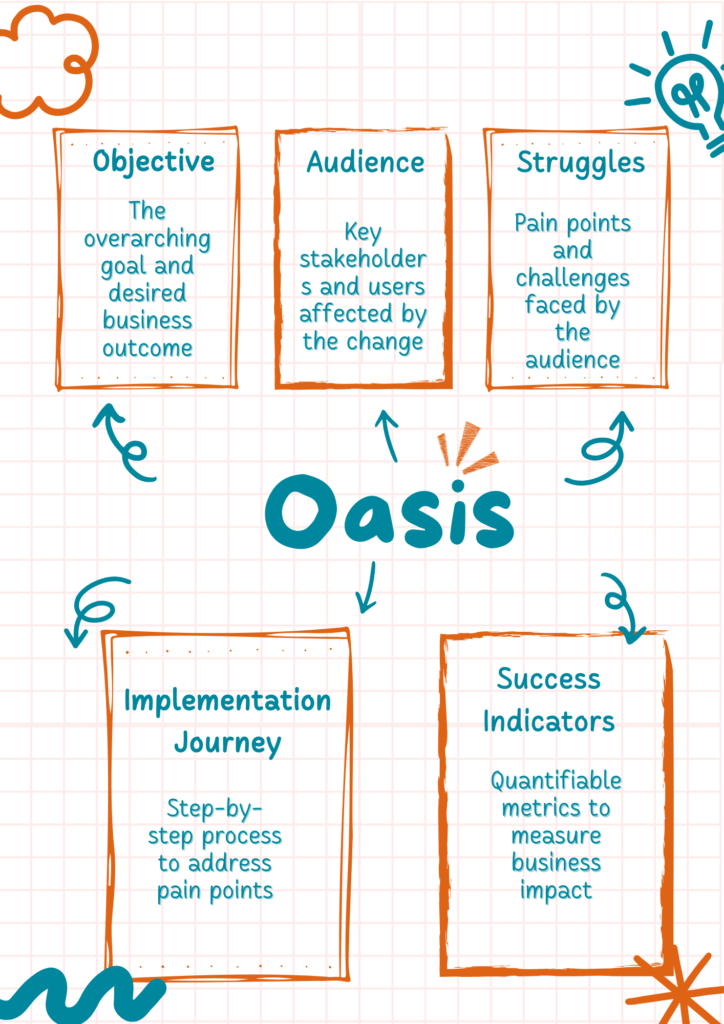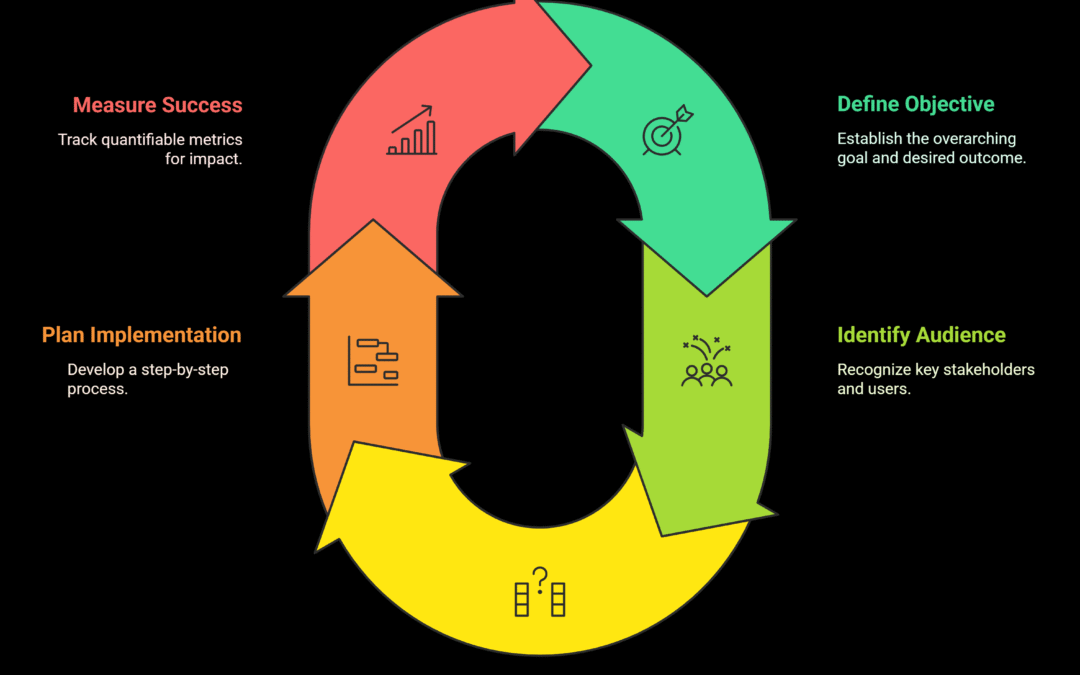Challenges with User Stories
One of the key issues with user stories is their tendency to be written and thought of to be solution focused rather than outcome focused. Many stories describe what users do, such as “click a button” or “view a dashboard,” rather than addressing why users perform these actions or the impact they aim to achieve, such as “reduce decision fatigue” or “identify trends in under two minutes.” This focus on activities often leads to superficial solutions that fail to deliver meaningful outcomes.
Another challenge arises from the use of proxy users, which can mask the real needs of end users. The history of user stories could be traced back to XP (Extreme Programming) where there was an expectation that the customer needed to be onsite and written by him. Through regular communication between the development team and the customer, stories were in card form that provoked conversation. The distance between the customer and user in today’s world is further away, and hence, the disconnect dilutes the true impact of the work being done.
Can you count the number of layers in your organisation that you have to pass through in order to reach the real stakeholder or user?
The concept of value in user stories is often abstract and unquantified. While the INVEST principle emphasizes stories to be valuable, this criteria frequently lacks measurable metrics. For instance, instead of stating “improve customer satisfaction,” teams should aim for specific outcomes like “reduce support tickets by 30%.” Without clear metrics, it becomes difficult to assess whether we are headed in the right direction.
User stories also suffer from system thinking, where they fail to account for how the system will respond to the users. This can lead to fragmented solutions that create downstream problems. For example, a story focused on “faster checkout” might overlook its impact on inventory management or fraud detection systems, resulting in unintended consequences.
Problems with User Stories (INVEST Principle):
- Independent: Stories rarely standalone teams struggle with hidden dependencies.
- Negotiable: Encourages scope changes mid-process, incurring hidden costs (violates Don Reinertsen’s economic principles of minimizing decision latency and transaction costs).
- Valuable: “Value” is hard to measure in absense of measurable business outcomes.
- Estimable: Estimates lack confidence (<80% probability) due to missing system-level context.
- Testable: Ambiguous criteria create testing gaps, risking quality erosion.
Why do we like to call Impact Stories?
The stories are meant to create a maximum impact in the lives of users by changing the way they are working currently.
Introduction to OASIS:
The OASIS principle offers a practical alternative to traditional INVEST user stories, shifting focus from features to measurable impacts. This approach transforms user stories into “Impact Stories,” acknowledging that our proposed solutions are hypotheses aimed at improving our end users’ and stakeholders lives.

OASIS stands for:
- Objective: The overarching goal and desired business outcome
- Audience: Key stakeholders and users affected by the change. Some of the users are actively interacting with the system and others are passive but they too have keen interest. Consistent with Tom Gilb’s Stakeholder stories concept.
- Struggles: Pain points and challenges faced by the audience
- Implementation Journey: Step-by-step process to address the pain points
- Success Indicators: Quantifiable metrics to measure impact of the business outcome. When defining success indicators for our impact story, we should consider both short-term and long-term horizons
By structuring our stories using OASIS, we create a comprehensive narrative that connects business objectives to audience needs, outlines a clear implementation path, and defines concrete success metrics.
Two approaches are being explained with the example:
- Full Implementation: Where all the pain points have been addressed.
- Partial Implementation: Where prioritised pain points have been implemented to create maximum impact in the shortest time and cost. Our principle of “Through Minimum, create maximum” is consistent with MVR (Minimum Valuable Release )
Let’s explain the concept with this sample story:
As a “Sales Allowance Approver”, I want to see truck and quote information when reviewing sales allowances, so that I can refine my allowance decisions based on the sales goals of specific products for my organization.
Steps to critical thinking and defining the Impact Story (Partial Implementation):
1. Start with the business outcome: The high-level goal that aligns with the Sales Allowance Approver’s role is ?
To improve the efficiency and accuracy of sales allowance decisions, ensuring they align with organizational sales goals and drive better product performance.
This objective:
- Addresses the core business need for better decision-making.
- Connects directly to organizational sales goals.
- Aims to improve product performance as a result.
- Focuses on both efficiency (speed of decisions) and accuracy (quality of decisions)
By framing the story this way, we shift from a feature-centric approach to an outcome-oriented perspective. This allows for more flexible and innovative solutions that directly address the business need, rather than limiting ourselves to a specific implementation (like simply displaying truck and quote information).
2. Audience: Identify key users interacting with the system and also the interests of passive stakeholders. The story mentions “Sales Allowance Approver”, which means he is the one who approves the sales allowance, and somebody else (perhaps the salesperson) is sending it for approval. There could be other passive stakeholders like truck manufacturers, dealership owners, truck associations, etc. By identifying these connections, we ensure that the user story addresses not only the needs of active users but also the broader interests of passive stakeholders who are indirectly influenced by the system’s decisions. This holistic approach ensures that the solution delivers value across the entire ecosystem.
3. Uncover and prioritize pain points: There are a number of pain points hidden in the sample story, and it’s better to list them out. After you have listed, we need to decide which one has the maximum impact that it can create with minimal development cost. (Through minimum, create maximum). Also consider the possibilities of this functionality and it technical constraints for the next release (MVR-Minimum Valuable Release)
Pain Points:
1. Lack of immediate access to relevant truck and quote information
– Direct impact on efficiency: Faster access to information speeds up decision-making
– Indirect impact on accuracy: Complete information enables more informed decisions
2. Difficulty in aligning allowance decisions with specific product sales goals
– Direct impact on organizational alignment: Ensures decisions support overall sales strategy
– Indirect impact on product performance: Allowances can be tailored to boost specific product sales
3. Time-consuming process to gather the necessary context for each allowance request
– Direct impact on efficiency: Streamlining this process significantly reduces decision time
– Indirect impact on accuracy: More time for analysis can lead to better decisions
4. Risk of making uninformed decisions due to incomplete information
– Direct impact on accuracy: Complete information is crucial for high-quality decisions
– Indirect impact on product performance: Well-informed decisions can better support product success
4. Map the pain point to the business outcomes:
There should be a direct or even indirect connection between the pain point to the business outcomes. The key is to pick those direct, aka leading connections, which could create the maximum impact on the lives of the audience and hence affect a change in the way business operates.
5. Define and slice the steps: The best way to define the process flow is to think from the salesperson’s perspective as well as from the Sales Allowance Approver side. List out end to end from the perspective of Jobs to be done by the audience for only the pain points (numbered below).
Basic Steps (Mapped to pain points
a) Salesperson inputs accurate quote and truck information (1)
b) System notifies Sales Allowance Approver (3)
c) Approver reviews request details as a one-click emailer (3)
d) Approver makes decision (accept/reject/comments) (3)
e) System updates request status (3)
f) Salesperson receives decision (3)
This process flow could easily form part of your test cases or acceptance criteria.
6. Measure the changed behaviour: These metrics should relate to the objective and address the identified pain points.
Here’s an expanded view of success indicators:
Short-term indicators (measurable within 1-3 months of implementation):
- Reduction in average time taken for allowance approval (e.g., from 2 days to 1 day)
- Increase in percentage of decisions made with complete information (e.g., from 70% to 95%)
- Decrease in requests for additional information from approvers (e.g., 30% reduction)
Long-term indicators (measurable over 6-12 months):
- Improvement in alignment between allowance decisions and product-specific sales goals (e.g., 20% increase in goal-aligned decisions)
- Increase in overall sales performance for products with optimized allowance strategies (e.g., 10% growth in targeted product lines)
- Reduction in inconsistent decisions across similar allowance requests (e.g., 50% decrease in decision variability)
Product metrics (ongoing measurement):
- User satisfaction scores for both salespeople and approvers (aiming for 90%+ satisfaction)
- System adoption rate among eligible users (target: 95% adoption within 6 months)
- Impact on overall profitability of deals with allowances (e.g., 5% improvement in profit margins)
This is to quantify each of the changed behaviour when we are successful.
Here is the rewritten impact story using the OASIS framework (implementing all the pain points):
Impact Story: Full implementation
Title: Enable Sales Allowance Approver to see truck and quote information for faster allowance decisions based on sales goals.
Description: Enhance decision-making efficiency and accuracy for sales allowance approvals, ensuring alignment with organizational sales goals and driving better product performance. Specifically, aim to reduce approval time from 2 days to 1 day and increase alignment with sales goals by 20% within the next quarter.
Primary: Sales Allowance Approver
Secondary: Salesperson (initiating the allowance request)
Pain points
- Lack of immediate access to relevant truck and quote information
- Difficulty in aligning allowance decisions with specific product sales goals.
- Time-consuming process to gather necessary context for each allowance request.
- Risk of making uninformed decisions due to incomplete information
Steps:
- Salesperson submits allowance request with quote information and truck information (1, 3)
- System generates notification with primary relevant fields for approver (1 and 3)
- Embedded sales goal progress indicators in approval alerts (2)
- Approver reviews request details including alignment with sales goals (2 and 4)
- System updates request status and notifies salesperson (improves process efficiency)
- Salesperson receives decision and acts accordingly (improves process efficiency)
Impact story maintains the focus on outcomes and measurable impacts while providing a clear structure for understanding the project’s objectives, audience, challenges, implementation steps, and success metrics. It shifts the focus from a feature-centric user story to a comprehensive impact narrative that addresses business needs and user pain points.

Your blog is a testament to your passion for your subject matter. Your enthusiasm is infectious, and it’s clear that you put your heart and soul into every post. Keep up the fantastic work!
Your blog has quickly become my go-to source for reliable information and thought-provoking commentary. I’m constantly recommending it to friends and colleagues. Keep up the excellent work!